Beyond Aesthetics
/
Design’s Role in
Value Proposition Creation
Project: Desk and Floor Product Strategy
Brand: Philips
Year: 2024
#ValueProposition #DesignStrategy #StakeholderManagement
At Signify and Philips, before officially starting the development of any product, we go through the Value Proposition Creation stage. This phase serves as the preliminary definition process, similar to the "Discover" and "Define" stages of the Double Diamond design process.
Value Proposition Creation framework helps us systematically research, gather, and define key information before diving into product solutions.
Framework Breakdown:
-
Business
- What is the market size of the industry we are targeting?
- How much potential market share can we capture?
- Who are our competitors? Why is our brand well-positioned to enter this industry?
- How does this opportunity align with our brand’s core values?
-
Customer
- Who is our target audience? What are their habits and needs?
- What are the key user scenarios?
- What are the pain points and insights we should address?
-
Offering
- Based on user needs, what are the potential opportunities?
- Why do these solutions effectively address user needs?
- What are the key substantiations behind these solutions?
- How do our solutions outperform those of our competitors?

In the desk and floor light portfolio, we first define the target audience. For example, one product line is designed for mothers and children, so we explore where they live, their quality of life, and daily habits. In simple terms, the goal is to understand and define their lifestyle.

Value Proposition Creation stage involves not only the design team but also key stakeholders such as business product managers, R&D, procurement, regulation expert, sales and marketing. It is a collaborative and iterative process with multiple co-creation workshops.
For example, we work together to define user scenarios for the target audience, imagining their daily lives, how children interact with the lighting, and their overall experience and emotions while using the product.


Our exploration of user value remains centered around the role of light, focusing on both its visual benefits for task execution and its emotional impact on users. To ensure alignment among stakeholders, we also utilize graphics and visual aids to clarify key factors and enhance shared understanding.



In 2023, Signify China business conducted research on mothers and children, aiming to understand their daily routines. Our design team translated these insights into a user journey map, leveraging generative AI tools like MidJourney to visually represent the journey.
We explored how parents and children interact with lighting throughout the day—from waking up at 6:30 AM to going to bed after 10:00 PM—identifying pain points and opportunities that served as the foundation for subsequent co-creation workshops.

Next, we invited product managers from different functions along with internal mother users to explore the user’s daily journey. During the session, participants shared their insights and ultimately voted on the most impactful pain points and opportunities, helping us prioritize key areas for development.
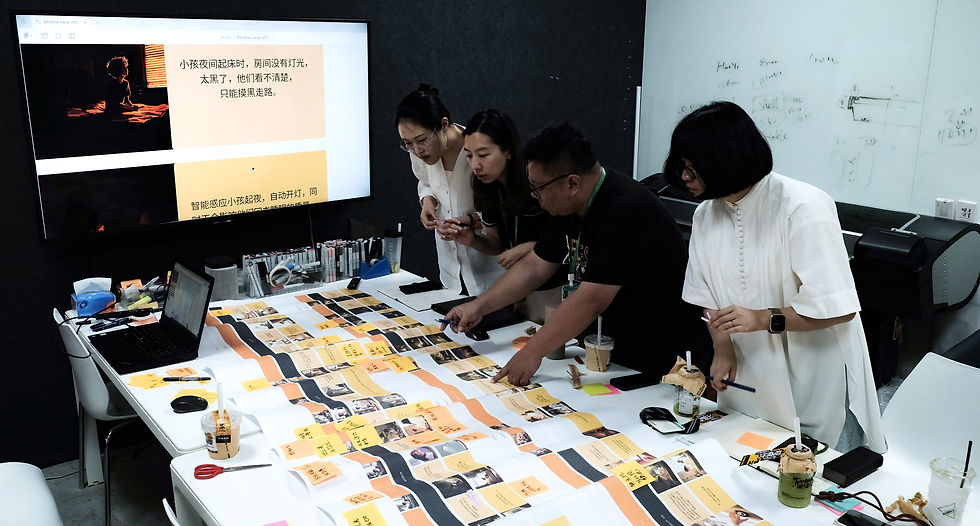

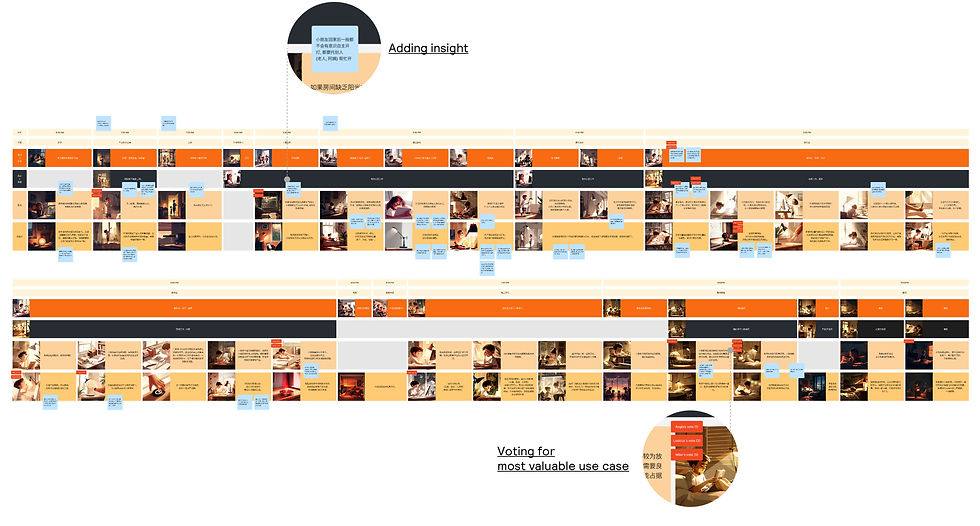
Based on the inspiration and outcomes of the co-creation workshop, we selected ten most impactful use cases for users. We then conducted in-depth ideation to develop feasible solution ideas that effectively address these pain points.


User validation is a crucial step in the VPC process, as it helps us understand which direction from our early explorations resonates with users. It also serves as a key source of inspiration to refine ideas and optimize our approach. During this phase, we conduct qualitative research at the Tmall Innovation Center.
We use various methods to create stimuli that help the audience quickly grasp the ideas we're presenting and understand what insights we aim to gain from them. For example, when developing a new desk lamp project, we used Blender's 3D-to-2D feature to create GIF animations for each idea, helping users better understand the problems and solutions we were exploring.
Additionally, we carefully designed the questionnaire, as we knew users wouldn’t have much patience while answering. Therefore, we focused on making the questions as short and concise as possible.
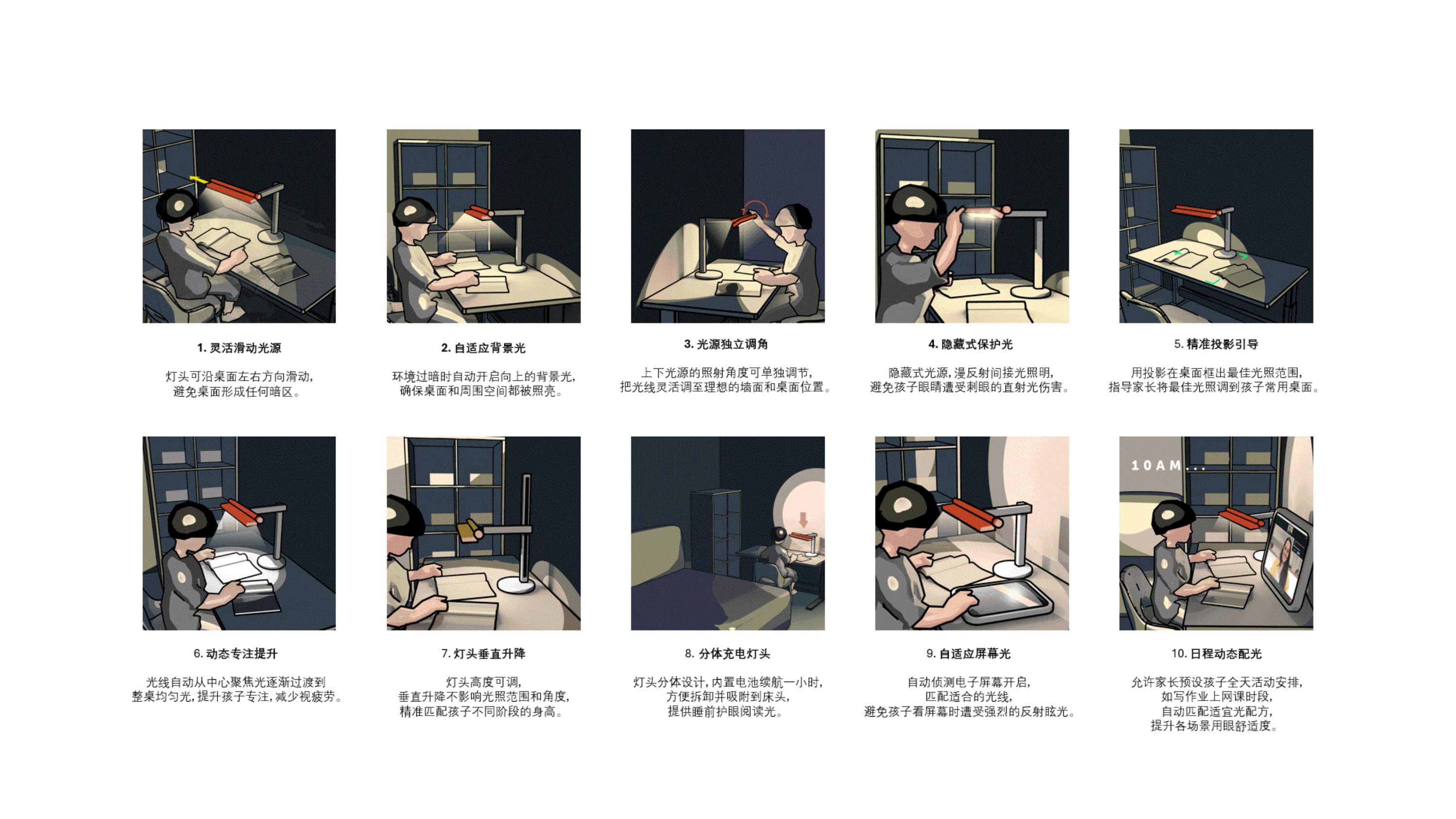
While developing F9-Versa, we used 3D rendering to create simple visuals and animation for testing different flexible light positioning concepts. This helped us better understand consumer needs in specific user scenarios and their reactions to our ideas.
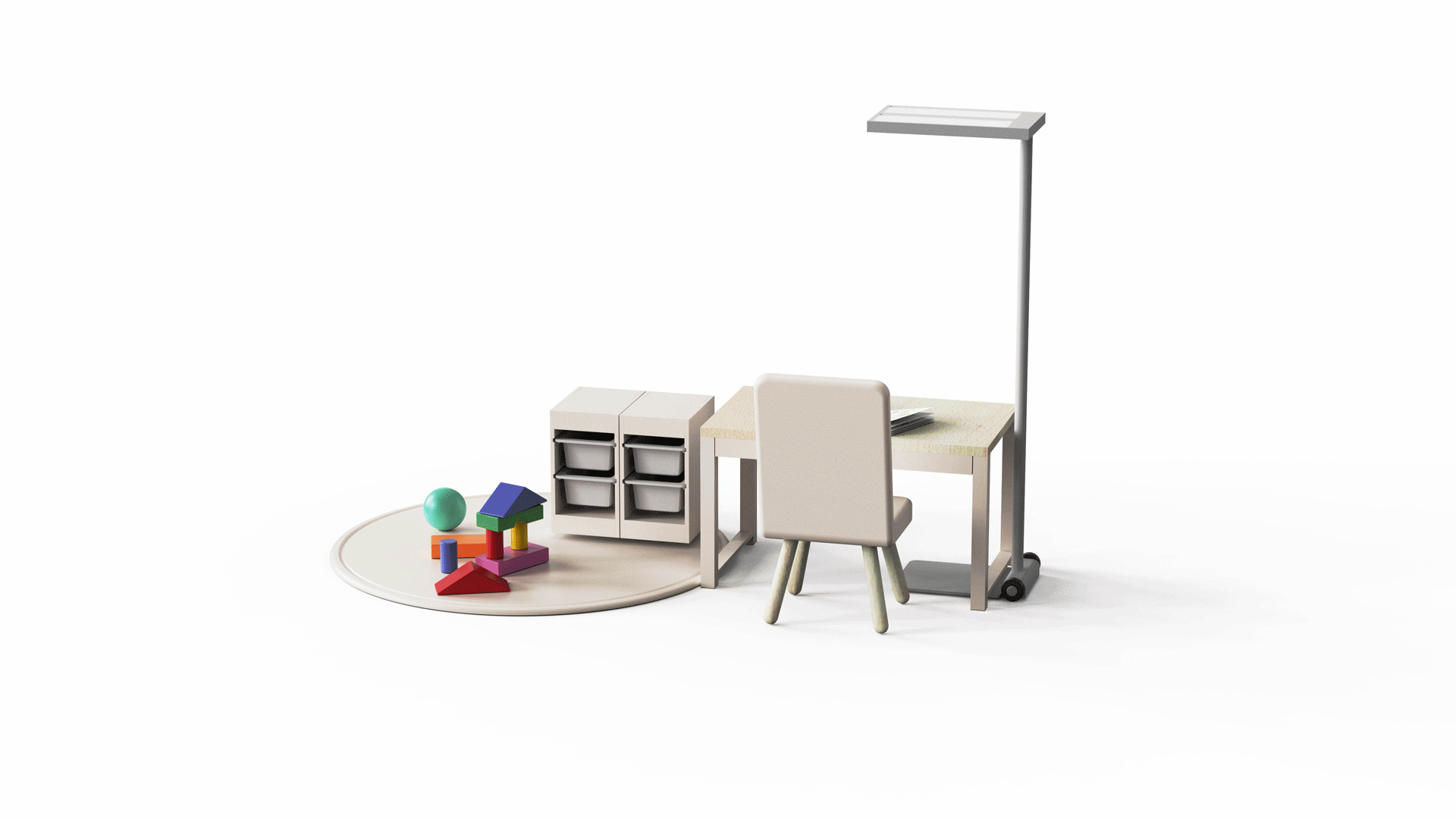
Sometimes, we also build a working prototype and invite internal colleagues who align with our target audience profile to participate in hands-on testing. This allows us to gather firsthand user feedback on the product's usability, lighting performance, and overall experience, inspiring us refine and optimize our direction before moving forward.


These tests provide us with valuable inspiration—sometimes revealing critical reasons why an initial idea cannot move forward, and other times highlighting which features hold the highest perceived value in the minds of consumers. Most importantly, they remind us to maintain an open mindset, continuously learning and adapting to what users truly need and desire.

Once we have identified potential solutions, it is beneficial to involve suppliers or in-house R&D teams early in the process. This allows for a preliminary feasibility assessment of the ideas, ensuring that they are not only innovative but also technically and economically viable.
For example, in the F9-Versa project, where we aimed to develop a movable floor lamp, we collaborated with suppliers early on to evaluate feasible concepts. We conducted prototype testing to verify the practicality of the design and gathered cost estimates to ensure it aligned with our target price range. These tests provided concrete evidence to stakeholders, demonstrating that the proposed direction was not only innovative but also cost-effective and manufacturable within our business constraints.
In portfolio architecture discussions, value laddering plays a crucial role in ensuring that each value class effectively communicates its distinct value proposition. This prevents inconsistencies in the product story and avoids situations where lower-tier products inadvertently offer more advanced features than mid-tier products, which could confuse consumers and dilute the brand’s positioning.

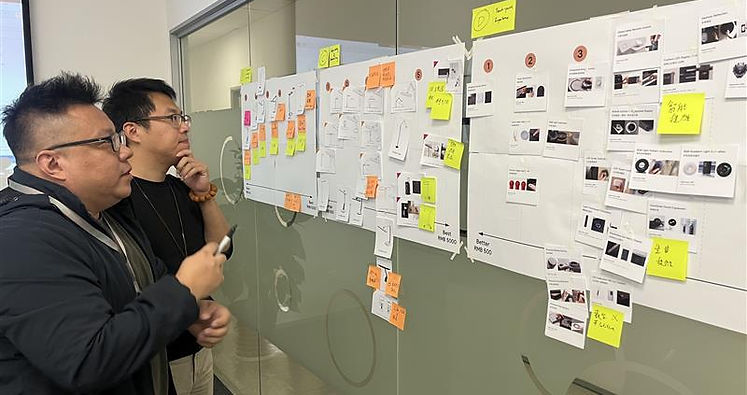

In addition to focusing on our own product, it's crucial to analyze market competition and understand the positioning of both our brand and others. This helps assess whether our offer is more competitive compared to the competition’s market strategy.


After the VPC stage, the next step is to bring the defined solution to life, such as collaborating with suppliers to design the internal architecture of the product. These steps require significant time and resources from all parties involved. If the VPC definitions are vague or unclear, and the inherent value of the idea is weak, then all the effort, time, and resources spent will simply be wasted.
On the other hand, if the VPC definitions are solid, the product’s value proposition and story will seamlessly connect from upstream development all the way to downstream sales, ensuring that the end-users clearly perceive its value.